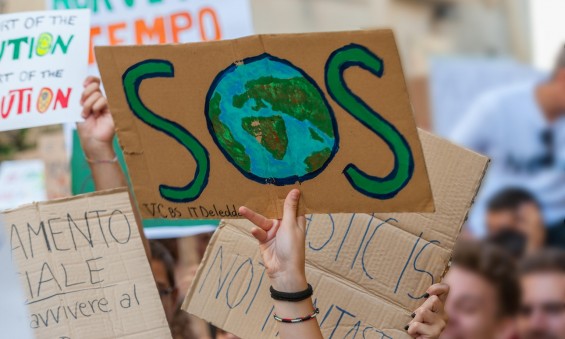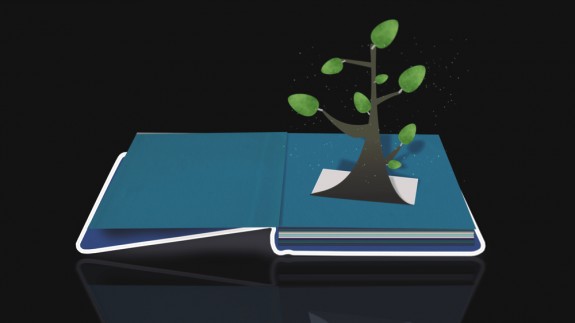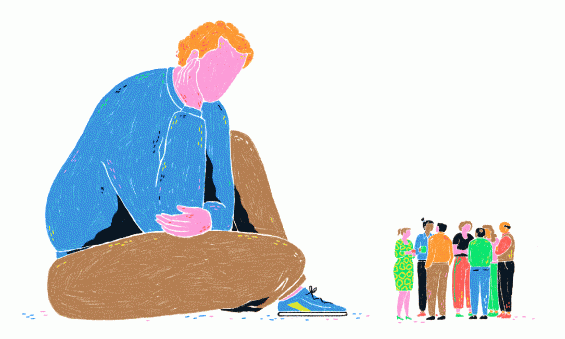
6 books to get you started with cli-fi
You’ve heard of sci-fi, but what do you know about cli-fi?
As global leaders struggle to make firm commitments to reduce emissions and scientists discover ever more dangerous feedback loops and repercussions from climate change, writers are using the power of the pen to show us what the world might look like if we don’t act soon to combat climate change. Dubbed “cli-fi,” these books are as much about the human condition as they are about the state of the planet. In that way, they’re much like traditional literature in that they’re asking questions about how people adapt to and meet potentially devastating challenges.
Here are six great texts for readers to dip their toes into this important genre:
1. Dry by Jarrod Shusterman and Neal Shusterman
As droughts pummel the American West in real life, Dry feels even more timely. The Tap-Out has forced people to limit their water use for years, but when the taps actually run dry, Alyssa’s suburban neighborhood becomes its own kind of dystopia, where friends and neighbors turn on one another in a desperate attempt to survive. Things go from bad to worse when Alyssa finds that she has to care for not only herself but her younger brother as well… and their lives hang in the balance. (Ages 13-17)
2. Orleans by Sherri L. Smith
This book is frighteningly relevant: Sherri L. Smith imagines what the Gulf coast would look like after being battered by devastating storms and suffering from a subsequent disease called “The Fever.” The Gulf coast is quarantined by a wall that separates it from the Outer States. Amidst this chaos and cruelty, young Fen finds herself left with her tribe leader’s newborn. Desperate to give the baby a chance at a better life outside the Delta, she teams up with a scientist named Daniel, and together they fight their way toward survival. (Ages 14 and up)
3. American War by Omar El Akkad
A master of dystopian fiction that feels both real and surreal, Omar El Akkad creates a version of the United States in 2074 where states splinter in the wake of a terrible plague, and a Second Civil War breaks out. Sarat Chestnut, only six at the time the war begins, learns the hard way that powerful forces will seek to take advantage of the crisis. Sarat finds herself in a camp for displaced persons and discovers just how dangerous this new American can be. El Akkad is a journalist, who has reported from conflict zones the world over, which makes this novel feel less like imaginative fiction and more like its story has been ripped from global headlines. (Ages 16 and up)
4. Blackfish City by Sam J. Miller
Part dystopian fiction, part magical realism, part political thriller, and part sci-fi, this novel has it all. It’s set in a floating city in the Arctic Circle, which was created in the wake of the climate wars. Always a hard place to live in, the city is beginning to resemble the world we readers know too well: inequality is growing rampantly, and crime and political corruption are on the rise. Enter “the orcamancer,” a woman riding an orca, who seeks to draw together a band of resistors to fight back against the city’s degradation, but Miller raises questions about the destruction she’s willing to undertake. Miller aims for this narrative to argue for the rights of the marginalized, and he hits the mark, crafting a story that elicits empathy and compassion. Parts of the narrative are fairly violent, but it isn’t without hope. (Ages 16 and up)
5. Ministry for the Future by Kim Stanley Robinson
Kim Stanley Robinson is a giant in the sci-fi/fantasy world, and this novel is his latest feat. Ezra Klein called this novel “the most important book [he’s] read” in 2020. This is a lengthy read, but it feels more contemporary than other cli-fi texts… but not in a comforting way! The world of this novel feels all too plausible: in the wake of government inaction, eco-terrorists desperately try to take out polluters by whatever means necessary. The book asks some weighty moral questions about what kinds of actions are justified in an increasingly unstable world and explores different pathways toward a more stable future: bureaucratic avenues are juxtaposed against radical, violent action, and everything from geo-engineering to terrorism seems to be on the table for one group or another. Readers will find themselves pondering the questions the book raises long after the final page. (Ages 17 and up)
6. The Fifth Season by N.K. Jemisin
As the first part of Jemisin’s Broken Earth Trilogy, The Fifth Season considers how societies deal with disaster on an epic scale. The book combines both science fiction and fantasy, which makes for the perfect combination to address issues like seismology and volcanology, which can feel other worldly in their devastation. This one’s another lengthy read, but the corollaries to our world in terms of the racial and class politics the novel addresses make it feel hyper relevant. And the gorgeous world-building alone is worth the time investment. WNYC chose this novel as a SciFri Book Club pick in 2019, so there’s lots to think about in this fantasy novel for the science-minded reader. (Ages 17 and up)
ABOUT THE AUTHOR
Shannon Falkner teaches English Language Arts at Chatham High School in Chatham, NJ. She is a Teacher Consultant at the Drew Writing Project and Digital Literacies Collaborative at Drew University. Shannon is a passionate advocate for “climate literacy” and has trained with The Climate Reality Project. In addition to teaching English, she volunteers as a climate educator and often writes about both education and climate.




